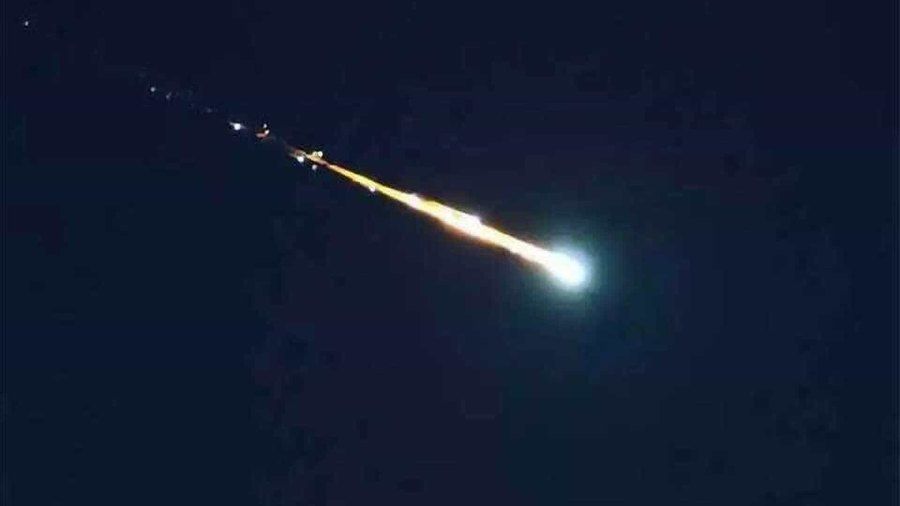Spectacular Sky Events in Portugal: The Eta Aquarid Meteor Shower and Recent Fireball Sightings
Experience the dazzling Eta Aquarid meteor shower and recent fireball sightings lighting up the skies over Portugal in May 2024. Discover optimal viewing tips and the science behind these celestial events.

In recent weeks, the skies over Portugal have been the stage for remarkable celestial phenomena. Stargazers and astronomy enthusiasts have been treated to the dazzling displays of the Eta Aquarid meteor shower and the unexpected appearance of a bright fireball. These events have captivated observers, drawing attention to the wonders of the night sky. This comprehensive article delves into the details of these occurrences, providing tips for optimal viewing and exploring the science behind these spectacular sights.
The Eta Aquarid Meteor Shower
The Eta Aquarid meteor shower, one of the year's most anticipated astronomical events, occurs annually between April 19 and May 28, with its peak around May 5-6. This year, the shower continues to provide stunning displays even into mid-May, offering an extended period of meteor activity.
Origin and History
The Eta Aquarids originate from Halley's Comet, a celestial body that last visited the inner solar system in 1986 and is expected to return in 2061. As Earth passes through the trail of debris left by the comet, these fragments, often referred to as "comet crumbs," enter our atmosphere at high speeds, creating bright streaks of light across the sky (Space.com).
Viewing Tips
To maximize your viewing experience, follow these tips:
- Find a Dark Location: Seek out an area away from city lights to minimize light pollution.
- Lie Back and Relax: Bring a comfortable chair or blanket and lie down to take in as much of the sky as possible.
- Give Your Eyes Time to Adjust: Allow at least 30 minutes for your eyes to adapt to the darkness. Avoid using your phone or other bright lights.
- Be Patient: Meteors can appear sporadically, so spend a good amount of time watching the sky (Space.com).
The Science Behind Meteor Showers
Meteor showers occur when Earth passes through streams of cosmic debris. The particles, usually no larger than a grain of sand, burn up upon entering Earth's atmosphere, creating the bright flashes we see as meteors.
Halley's Comet and the Eta Aquarids
Halley's Comet, one of the most famous comets in history, is responsible for both the Eta Aquarid and Orionid meteor showers. The comet's debris stream intersects Earth's orbit twice a year, leading to these two distinct meteor showers. The Eta Aquarids are particularly notable for their swift and bright meteors, which are best observed from the Southern Hemisphere, though they can also be seen from northern latitudes (Space.com).
Recent Fireball Sighting
In addition to the regular meteor activity, a particularly bright fireball was recently observed over Portugal. Fireballs are exceptionally bright meteors that can illuminate the sky and be seen over large areas. These events often generate significant interest and sometimes lead to speculation about their origins (Portugal News).
What is a Fireball?
A fireball is a larger-than-average meteor that produces a brilliant flash of light as it burns up in the atmosphere. Fireballs can vary in brightness, with some rivaling the intensity of the full moon. These events are relatively rare and can be spectacular to witness.
Optimal Viewing Conditions
For the best meteor-watching experience, follow these guidelines:
- Check the Weather: Clear skies are essential for good visibility. Monitor weather forecasts and plan your outing accordingly.
- Moon Phase: A dark, moonless night provides the best conditions. The light from the moon can wash out fainter meteors.
- Timing: The early morning hours before dawn are typically the best time to view meteor showers, as the sky is darkest and the radiant point of the shower is highest (Space.com) (Portugal News).
Additional Celestial Events
While the Eta Aquarids and recent fireball have been the main attractions, several other celestial events are worth noting:
- Perseid Meteor Shower: Occurring in August, the Perseids are known for their bright and numerous meteors.
- Geminid Meteor Shower: Taking place in December, the Geminids are one of the most reliable and prolific meteor showers, often producing up to 120 meteors per hour at their peak (Portugal News).
The recent celestial events over Portugal, including the Eta Aquarid meteor shower and the unexpected fireball, have provided awe-inspiring views and a deeper appreciation for the wonders of the night sky. By understanding the science behind these phenomena and following optimal viewing practices, stargazers can fully enjoy the spectacular displays that nature offers. Keep an eye on the sky for future meteor showers and other astronomical events that continue to captivate and inspire.